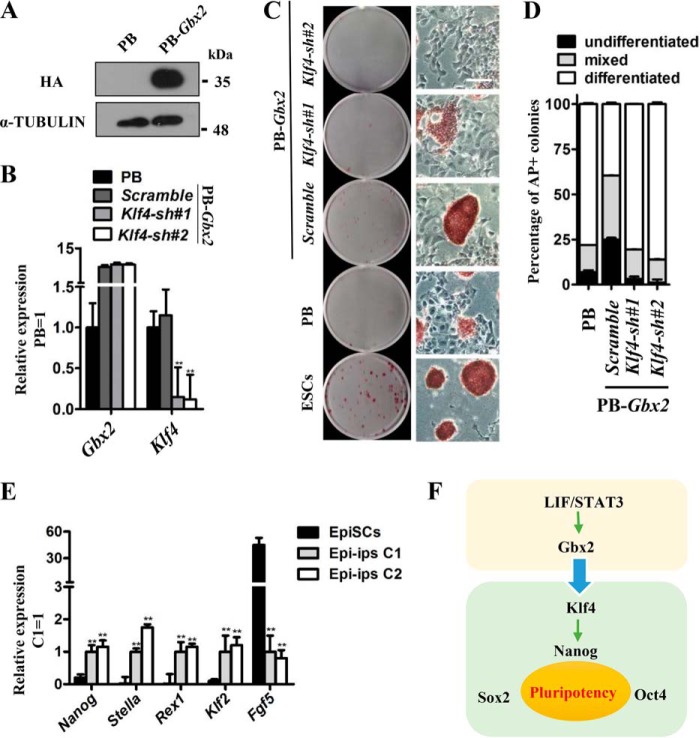Figure 4.
Klf4 is indispensable for Gbx2 to reprogram mEpiSCs to naïve pluripotent state. A, HA-tagged Gbx2 (PB-Gbx2) was introduced into CD1 mEpiSCs and the protein level of HA-tagged Gbx2 was determined by Western blot. The cells were maintained in medium supplemented with activin A, basic FGF, and IWR-1. B, qRT-PCR analysis of Gbx2 and Klf4 expression levels in Klf4 knockdown mEpiSCs overexpressing PB-Gbx2. The data are presented as the means ± S.D. of three independent experiments. **, p < 0.01 versus PB. C, AP staining of colonies generated from Klf4 knockdown mEpiSCs carrying PB-Gbx2 transgene. The cells were cultured in serum medium supplemented with LIF/2i for 12 days. Bar, 100 μm. D, quantification of the AP-positive colonies in C. E, comparison of gene marker expression in PB-Gbx2/scramble Epi-iPS cells and CD1 mEpiSCs. Nanog, Stella, Rex1, and Klf2 are mESC markers, whereas Fgf5 is a mEpiSC marker. The data are presented as the means ± S.D. of three independent experiments. **, p < 0.01 versus mEpiSCs. Epi-iPS, induced pluripotent stem cells generated from mEpiSCs; C1, clone 1; C2, clone 2. F, schematic diagram of Gbx2 input to the pluripotency network. Gbx2 and Klf4 integrate the LIF/STAT3 signal pathway into the core transcription factor network of mESCs.

